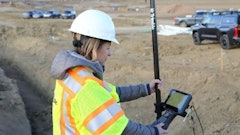Over the past few months I have spoken at several construction conferences. While the specialties were different the needs expressed by those contractors in attendance sounded similar. While there were a number of issues and needs shared with me over the course of the meetings, no one issue was brought to my attention more than the need to have decision makers working in our companies.
The gist of the need, and frustration, was that many contractors felt they had many employees who were not making the decisions that they, the contractor, was paying them to make. One owner said, "The fact that many of my most talented employees are not making the decisions that I pay them to make is really a reflection of my inability to let go!"
I tried to console and encourage this contractor, and I also presented him and other contractors at the conferences with my "85-10-5" Decision Making Model. Let me share some of the basic tenants of the model.
First of all, every employee needs to clearly understand and embrace what his or her roles and responsibilities include. While every single action that could be taken cannot be identified, they should have a clear enough picture of where those "boundaries" are that signal what they can do without any direction and what they cannot do without getting direction.
Along with this understanding employees also need to understand the type of decisions you expect them to make during the course of a workday. That's where the model fits in.
The "85" represents the approximately 85% of decisions they come across each day that they should be making without any input from you or others. While a new worker may not be able to do this initially, contractors should move their workers, especially their craftsman and field or department leaders, to be able to make most of their decisions independent of your input.
The "85" represents the decisions that you pay your workers to make, many of the simple decisions that are required throughout the day but that can interrupt your day. At some point you have to not make those decisions and push the responsibility for making those decisions to your people.
The "10" represents the approximately 10% of the decisions they could face that might require them to get some consulting advice from another individual prior to making the decision. The advice might come from you but it could also come from other resources. Like the 85% decisions, the worker still is required to make the decision. He or she is simply gaining advice from others who might have more knowledge, experience, or access to more critical information.
Finally, the "5" represents the 5% of the decisions that can confront a worker that should be delegated "up" to you. Often this decision might be related to a capital expenditure or the setting up of an account to pull material from or to purchase equipment or tools. The 5% decisions are simply better made by you or another senior leader.
What represents the decisions of the 85-10-5 Decision Making Model? Well, that totally depends on you and what you want your workers to do when it comes to making decisions. Certainly you can't just assume that every worker can make every decision needed; that's just not good or smart business. So you must sit down and map out the types of decisions that are being pushed back to you and that you feel very strongly that others should be making. List those decisions types and then begin to coach and train your workers on how you want to see such decisions made.
Teaching your workers to make decisions is not impossible but just remember, you might be more responsible for their not making decisions than you know.
So first identify what you need for them to decide, and then let them make those decisions - even if they might not be made exactly in the manner that you would have made them. Then coach them further.
Use the 85-10-5 Decision Making Model and watch them begin to take on more of the decisions that they should be managing.




















